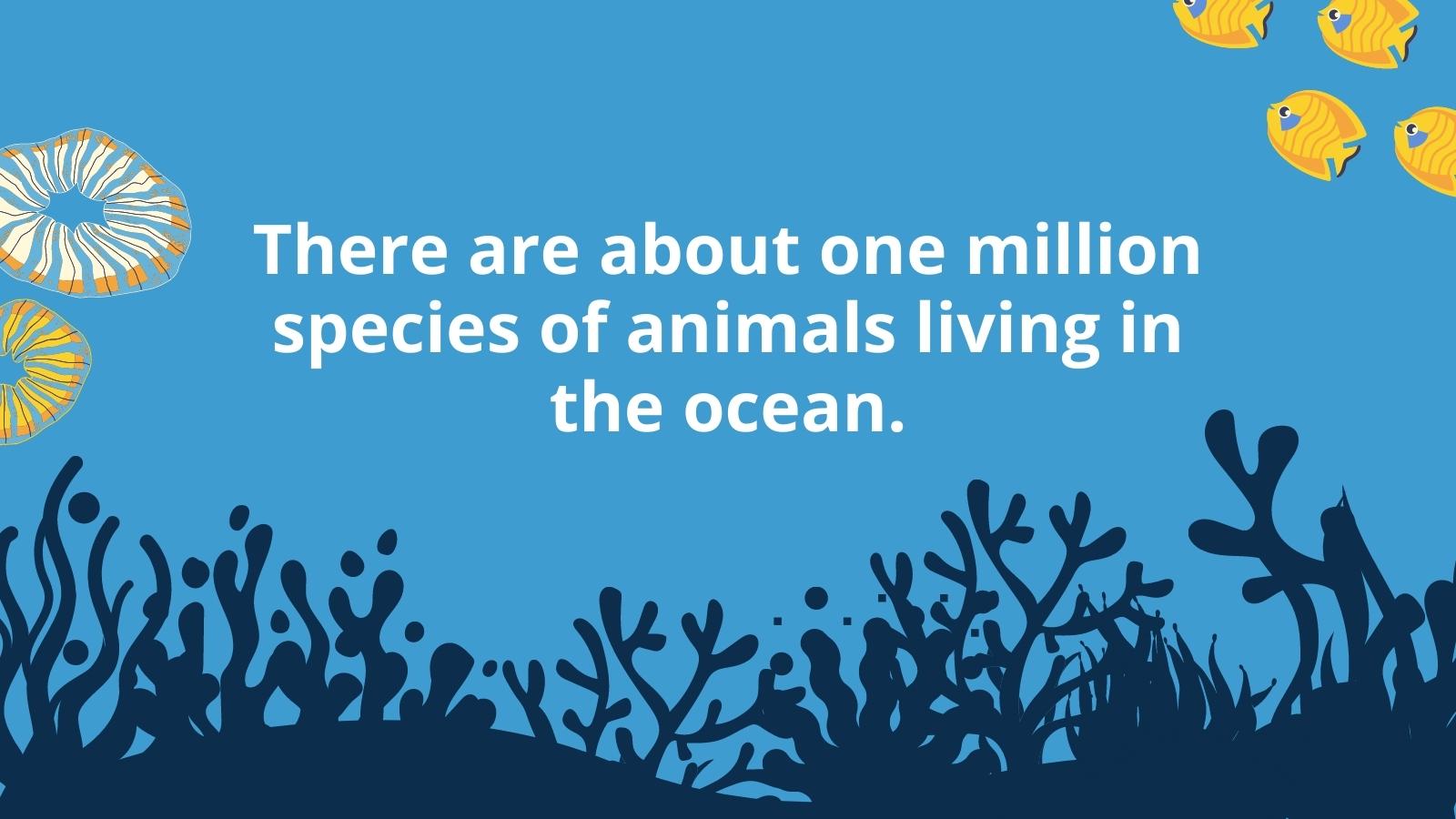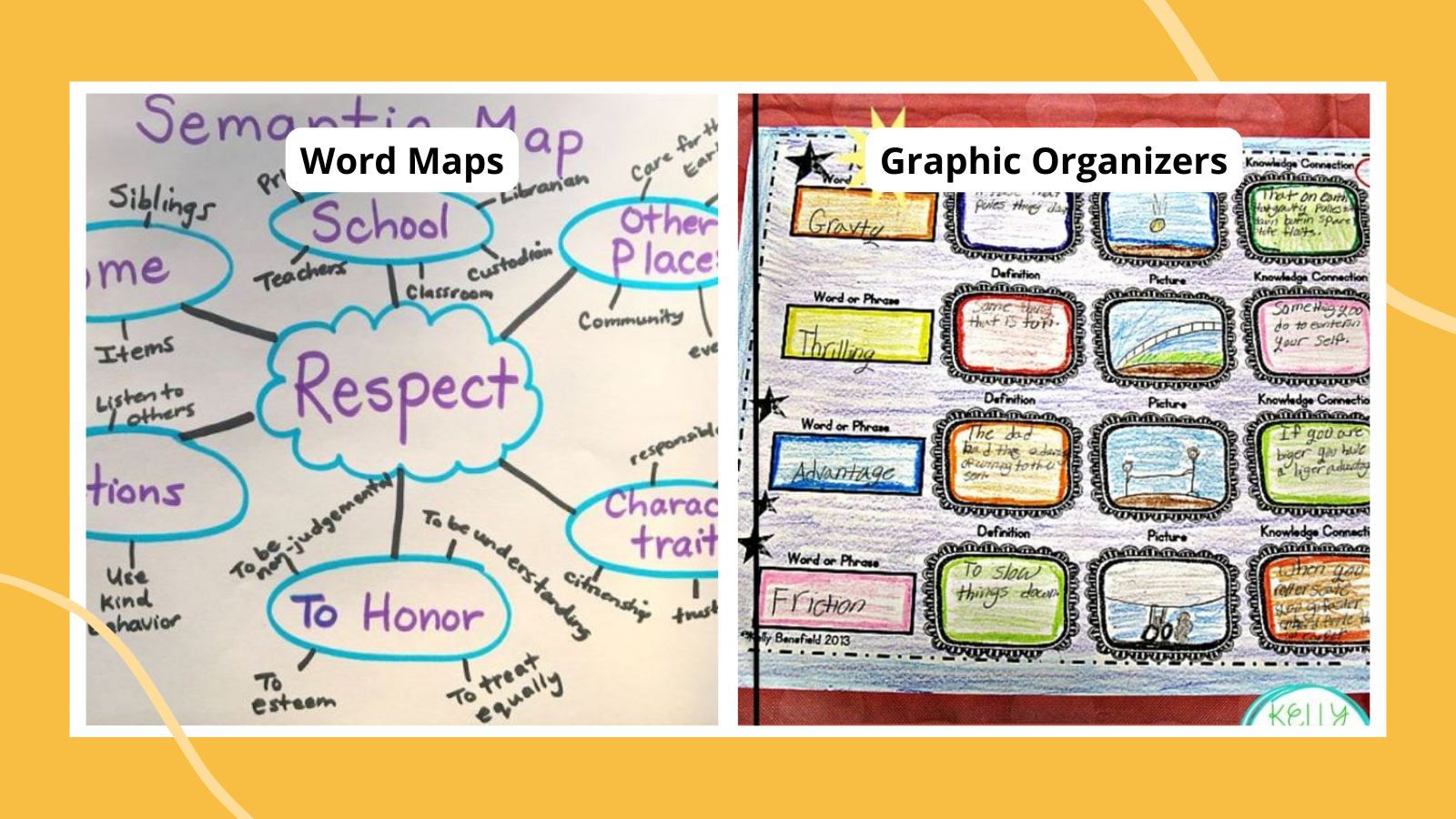Our Earth is covered with beautiful oceans—but how much do we know about them? While scientists have only explored a small portion of these bodies of water, we’ve learned a lot from their efforts. What’s a coral reef? Is table salt the same as what’s found in the ocean? What do oceanographers do? We’ve put together this list of amazing ocean facts for kids to share with your students in the classroom.
1. Oceans cover nearly 71% of Earth’s surface.
These huge bodies of salt water contain almost 97% of all the water on Earth.
2. There is one world ocean.
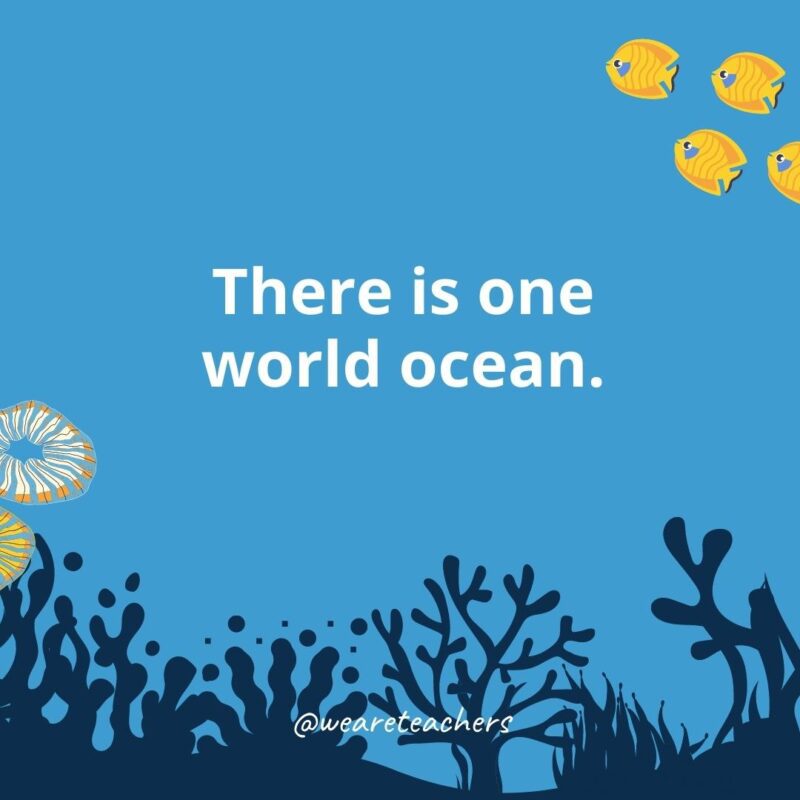
Scientists and geographers divide it into five different sections—the Pacific, the Atlantic, the Indian, the Southern, and the Arctic Oceans—but there’s really only one.
3. Seas are smaller than oceans and are typically partially enclosed by land.
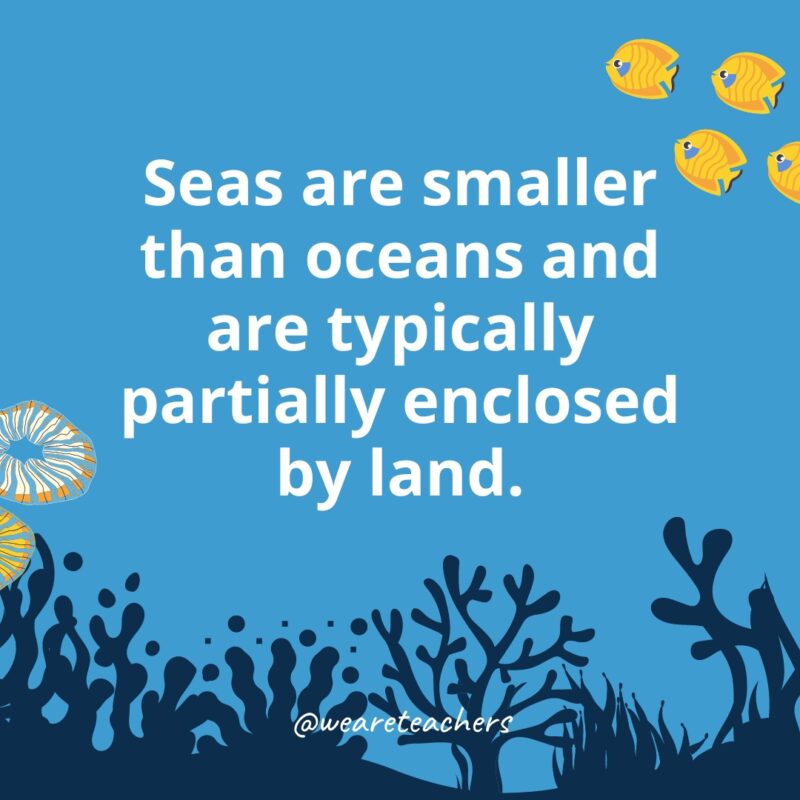
Seas usually have land on several sides. The Mediterranean Sea is located between Africa and Europe. The Baltic Sea can be found in northern and central Europe. You’ll find the Caribbean Sea between North America, Central America, and South America.
4. Ocean water is salty.
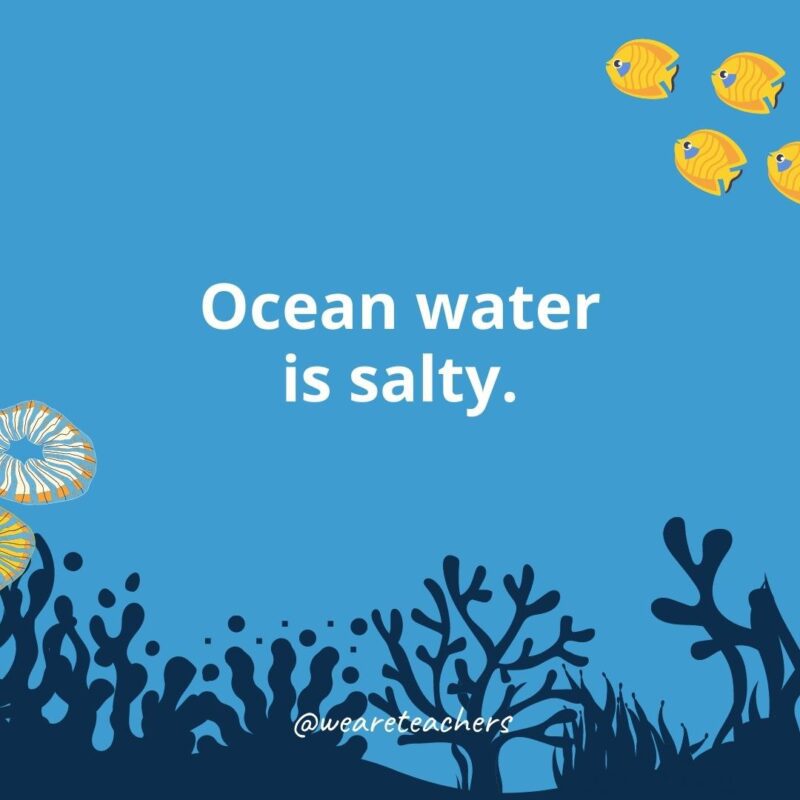
Its saltiness comes from sodium chloride, a chemical substance that is dissolved in the water. Our table salt is also sodium chloride but in crystal form.
5. Oceans are deep as well as wide.
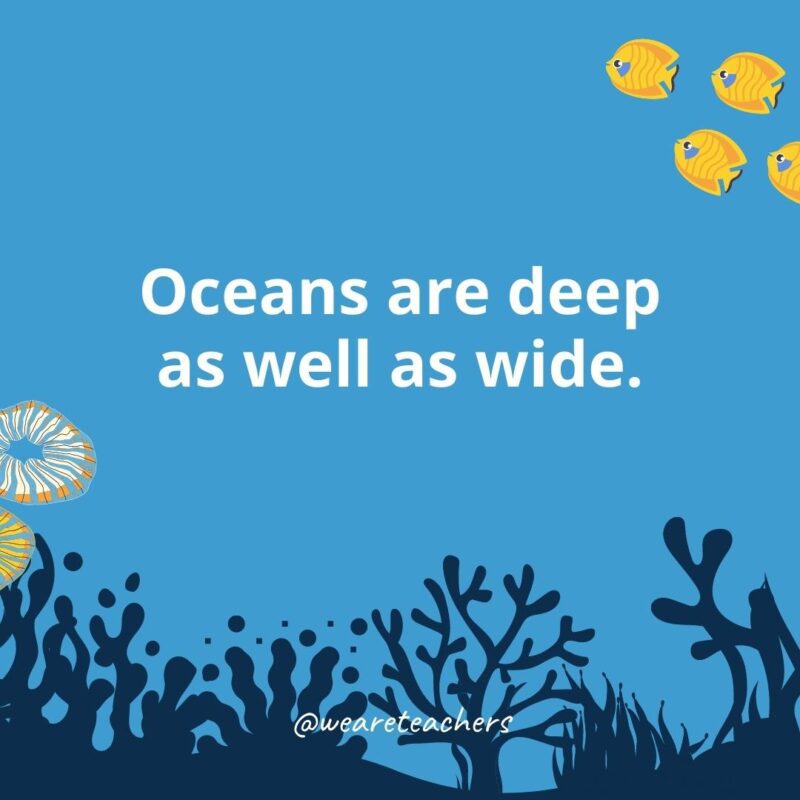
The average ocean is typically a little over 2 miles deep. The deepest part of Earth’s oceans, though, is the Mariana Trench in the Pacific Ocean, which is almost 7 miles deep!
6. The ocean floor has many levels.
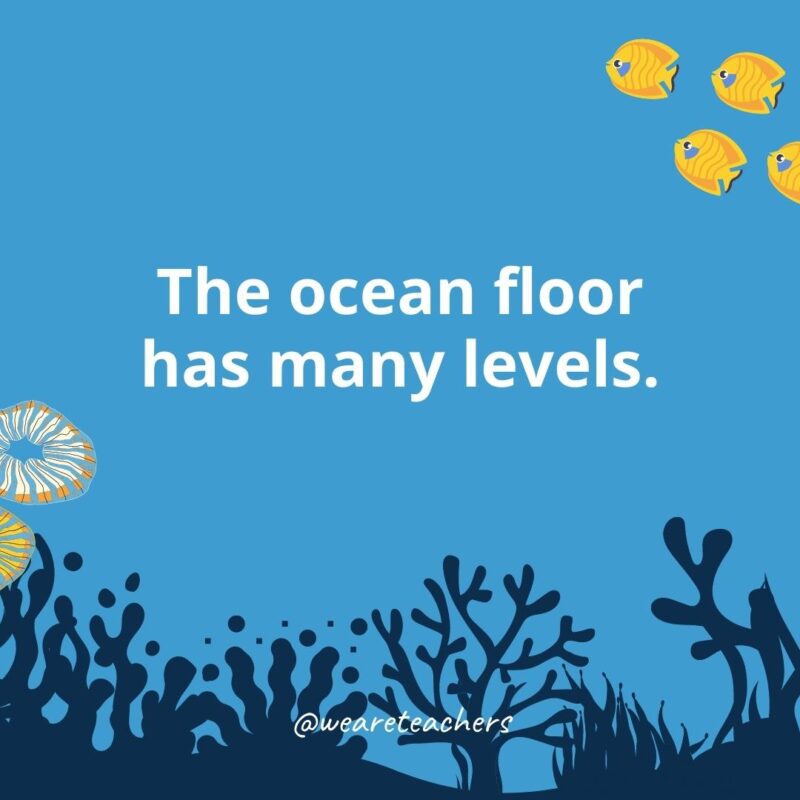
This might be one of the most interesting ocean facts on this list. The continental shelf, the shallowest part, runs along the edges of the continents. They slow down toward the deep parts, which are called the basins. All the way at the bottom of the basins are large, flat plains. Deep cracks in the ocean floor are called trenches.
7. Ocean water is constantly in motion.
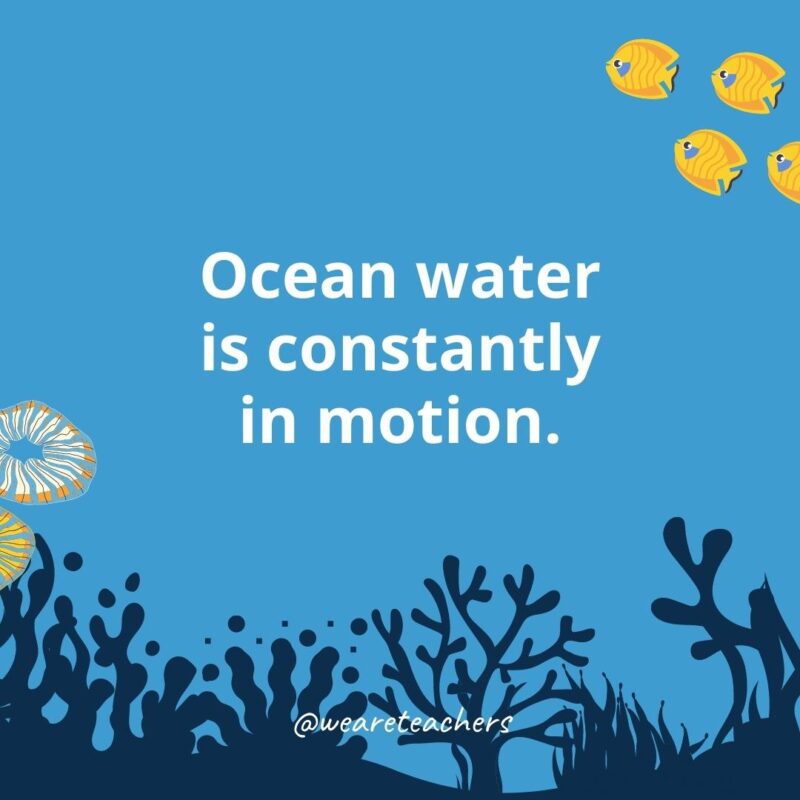
Winds and other forces move large amounts of ocean water around Earth in patterns called currents. Watch this great video to learn more!
8. Ocean currents can be warm or cold.
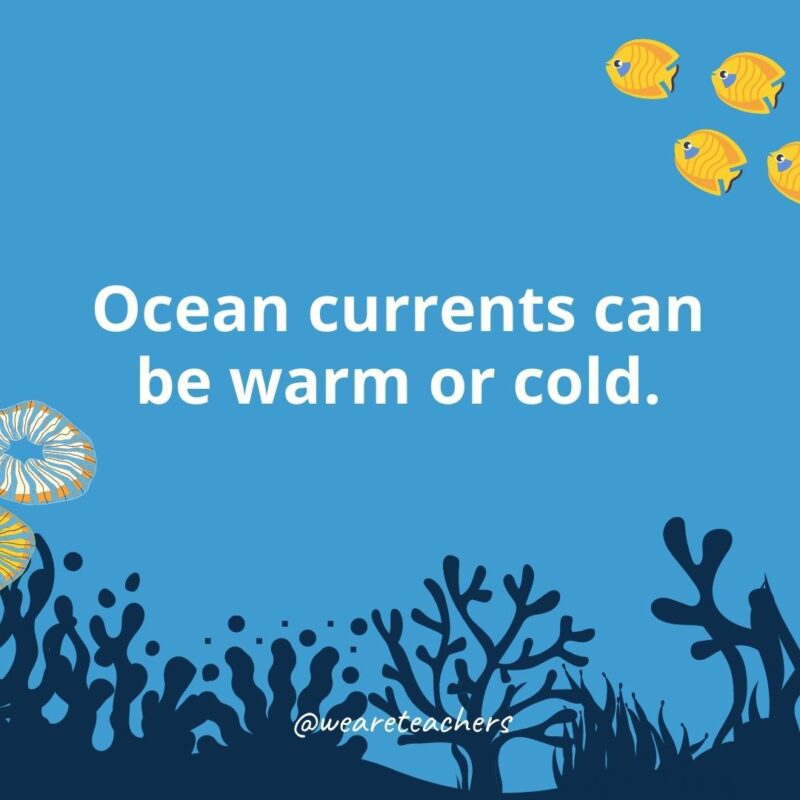
The warm currents usually bring warm weather and rain while cold currents often cause a dry climate.
9. There is life on all levels of Earth’s oceans.
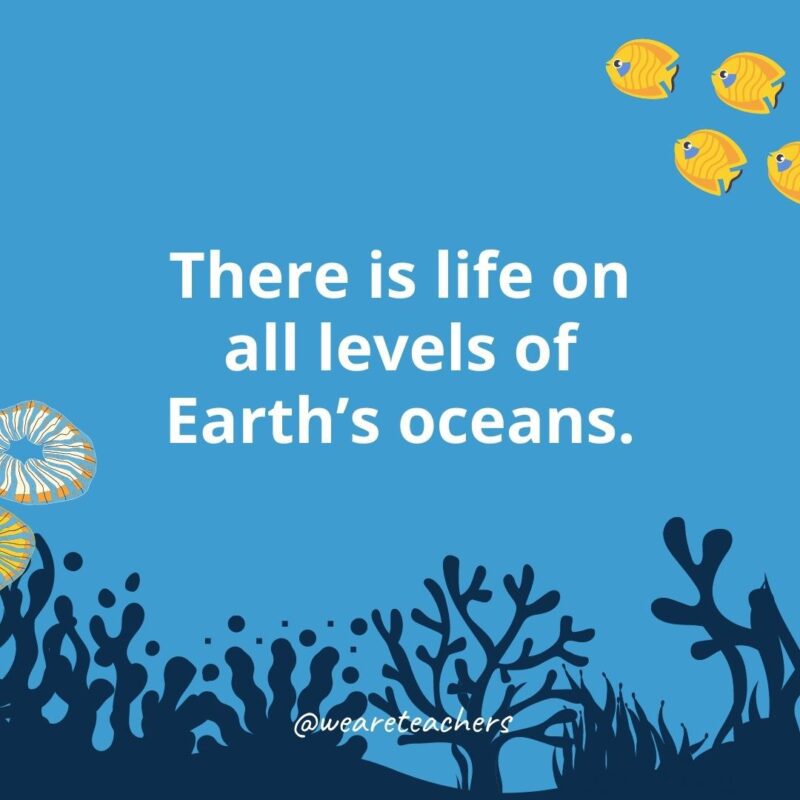
Whether it’s plants that grow near the water’s surface or animals swimming in their habitat, there are five major life zones, and many living things call our oceans home.
10. There are about one million species of animals living in the ocean.
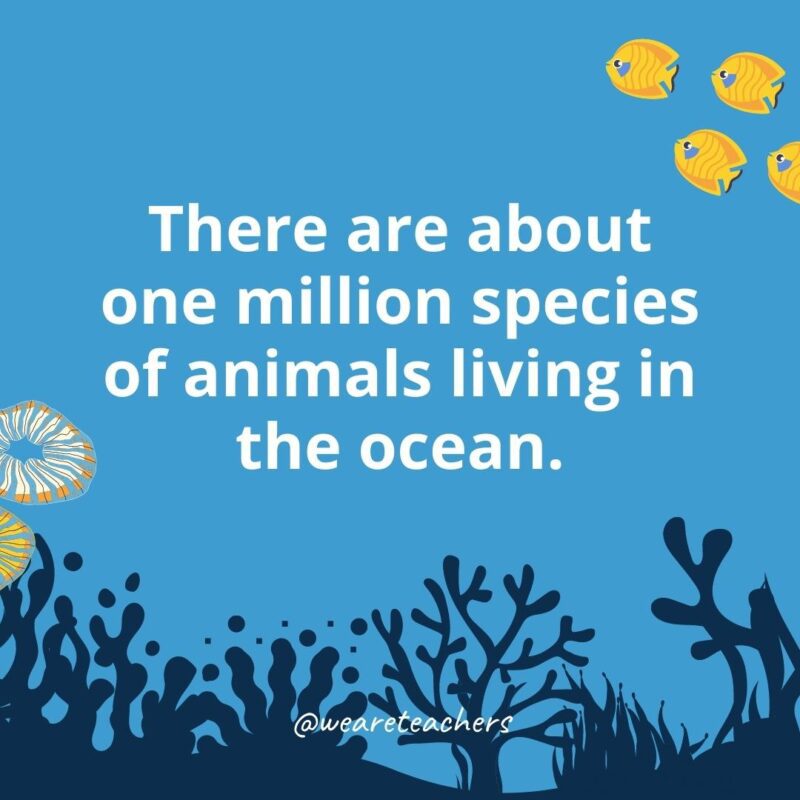
Most of them are invertebrates—animals without a backbone—such as shrimp and jellyfish. The truth is, though, that the number is unknown and scientists believe that 91% of ocean species have yet to be classified!
11. Some of the Earth’s smallest animals live in the ocean.
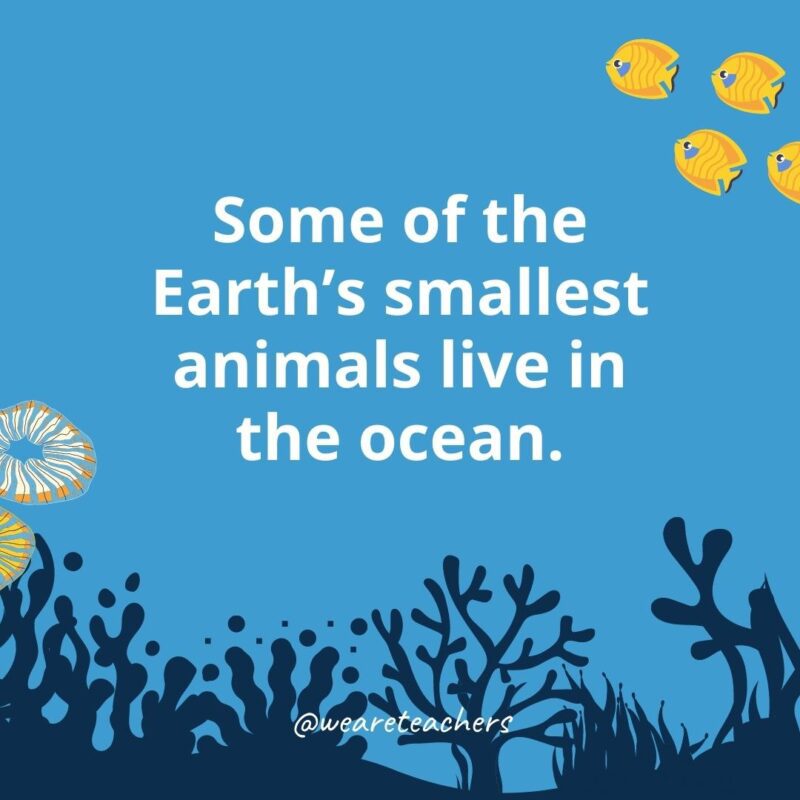
Zooplankton are so small that you need a microscope to see them!
12. The largest ocean animal is the blue whale.
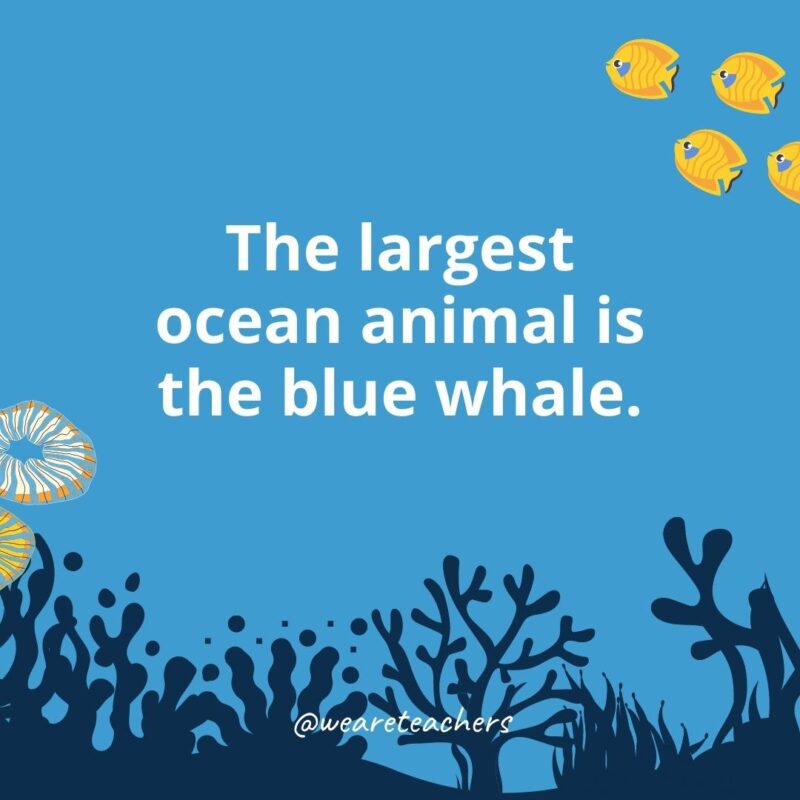
In fact, it’s the largest animal to ever live on Earth. It’s as long as two school buses! Watch this amazing video to learn more about blue whales.
13. The ocean has regions called habitats.
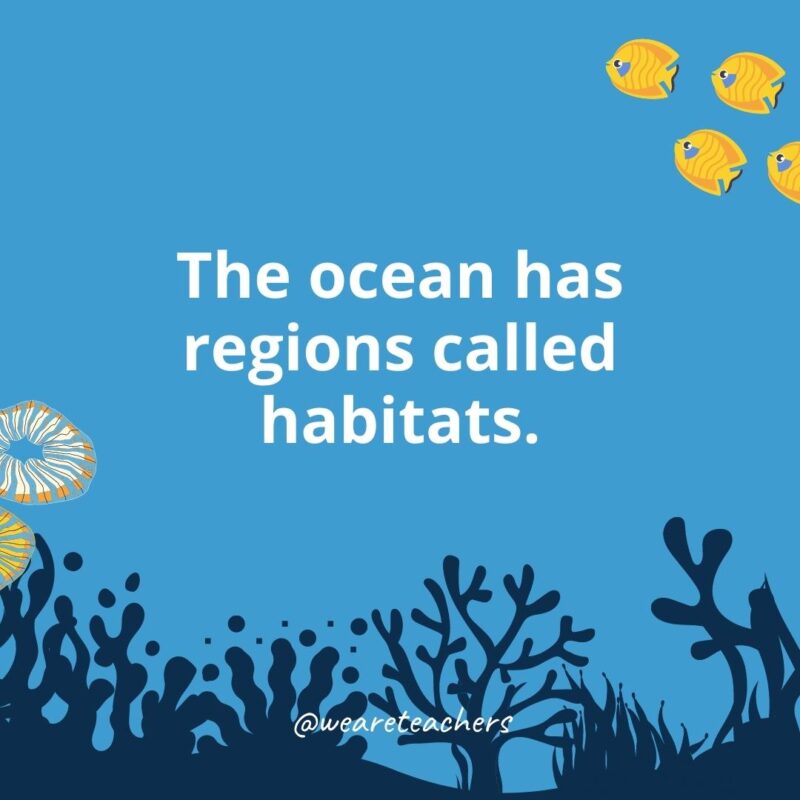
They can be divided into two, actually—coastal habitats and open ocean habitats. Distance from the shore, ocean depth, and temperature determine the types of plants and animals that live in an area of the ocean.
14. Coral reefs are a type of ocean habitat.
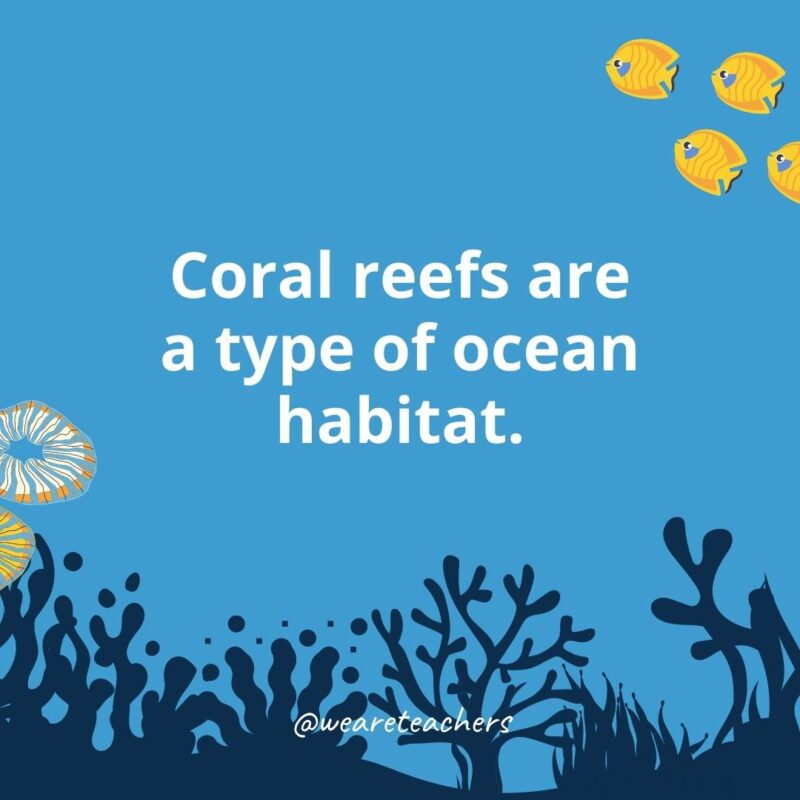
Coral reefs are among the most diverse habitats on Earth! The skeletons of tiny animals called polyps harden to give living polyps a home. When polyps die, more move in. Coral reefs are formed from thousands of years of this cycle.
15. Coral reefs are like the rainforests of the sea.
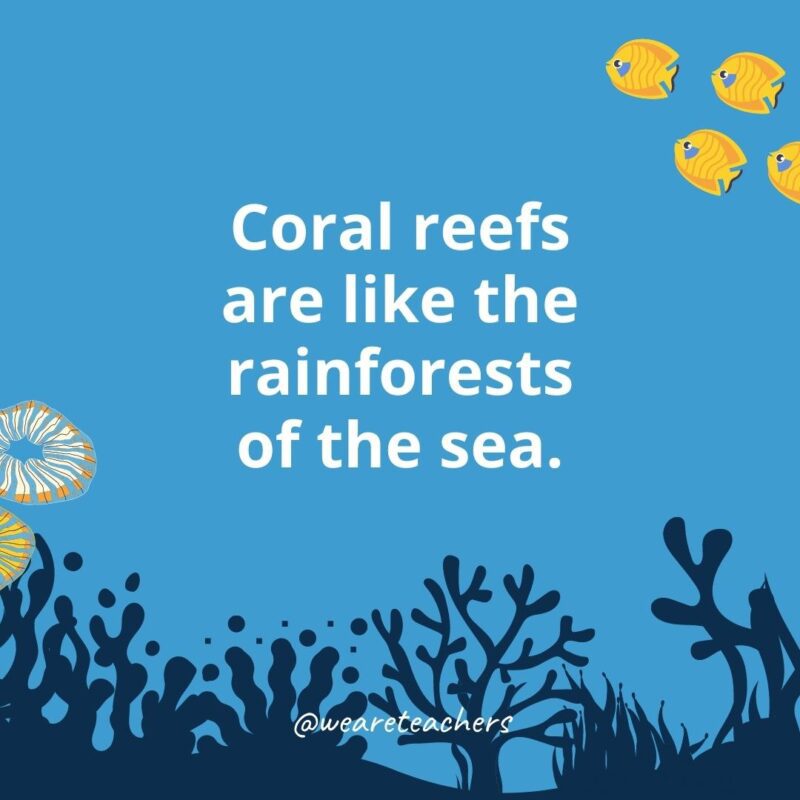
They provide food and shelter to many kinds of ocean animals. Check out this video about our world’s Coral Kingdoms.
16. Much of the world’s oxygen is created by phytoplankton and algae.
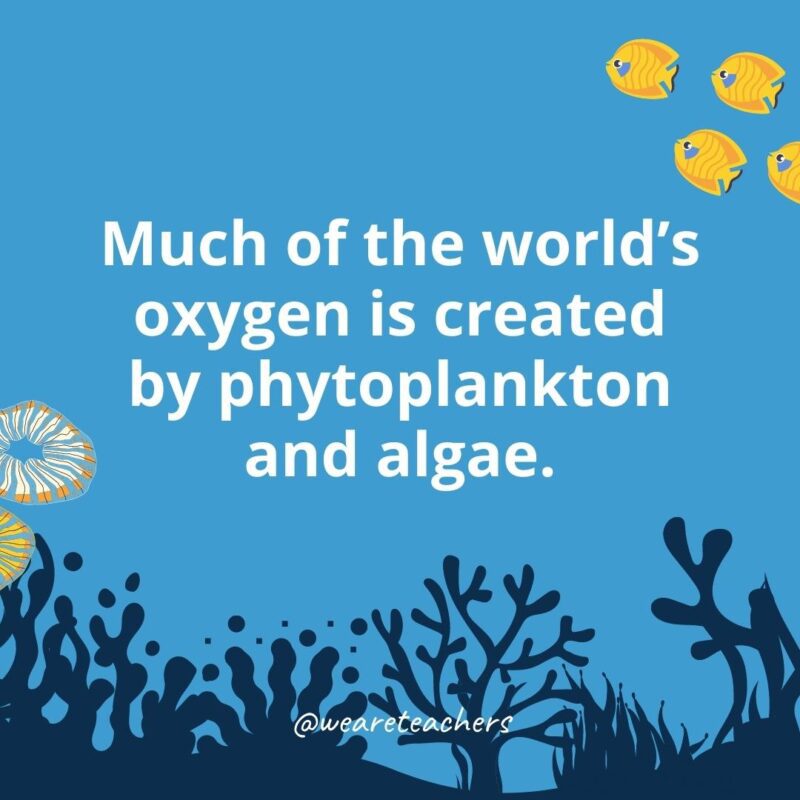
Through photosynthesis, they produce about half of the oxygen that land-dwelling creatures (including humans!) breathe.
17. Oceans keep climates stable by storing heat from the Sun.
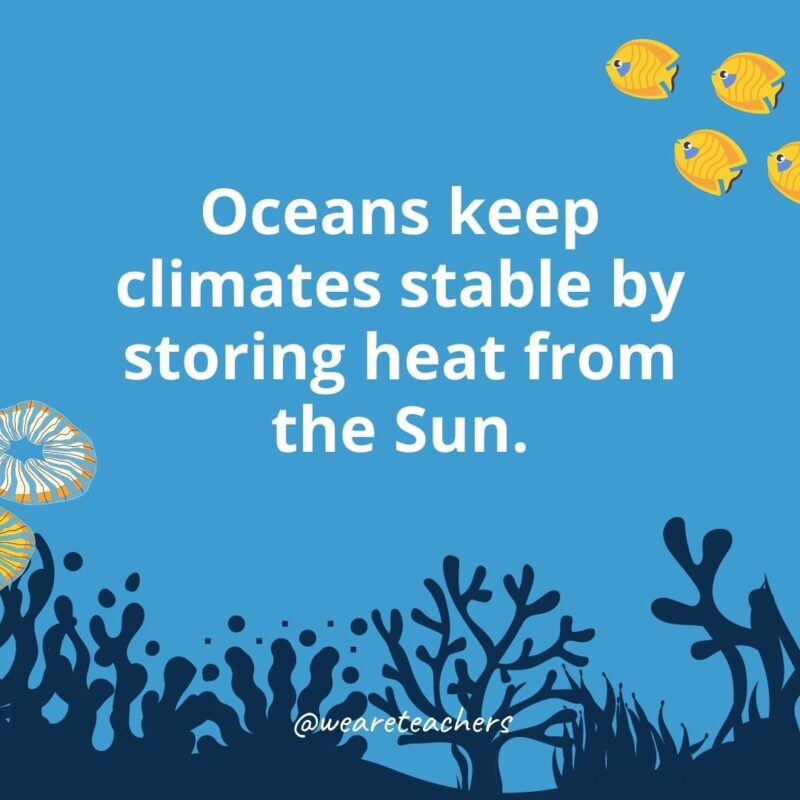
By moving water around the globe, oceans keep places from getting too hot or too cold.
18. About 171 trillion pieces of plastic are floating in the world’s oceans.
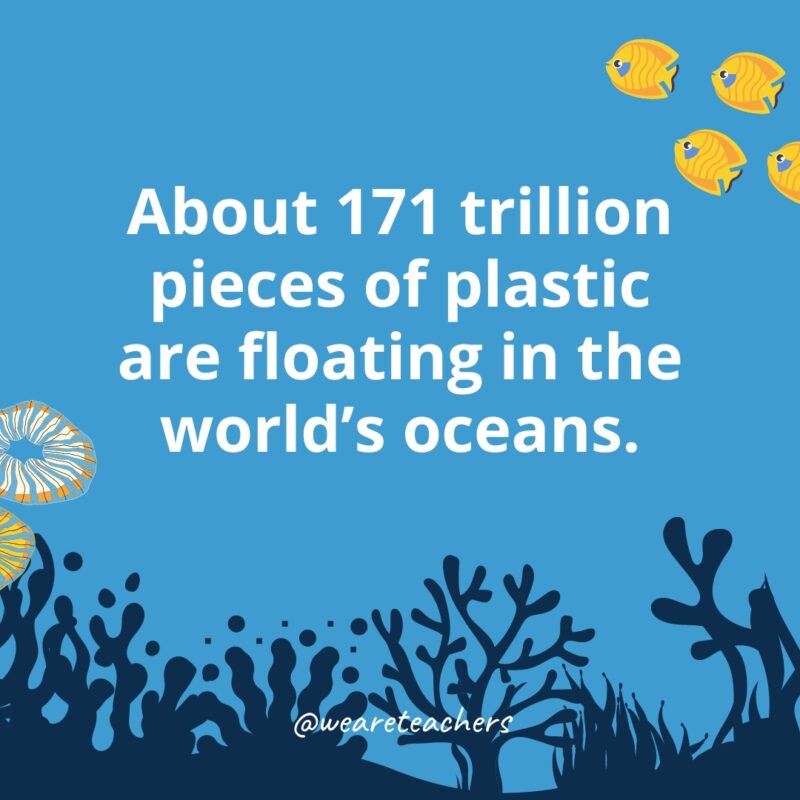
That’s just the estimate for plastic floating on the ocean surface—it doesn’t include plastic that has sunk below the surface! Watch these kids take action against ocean plastic.
19. Animals on both land and sea eat plastic.
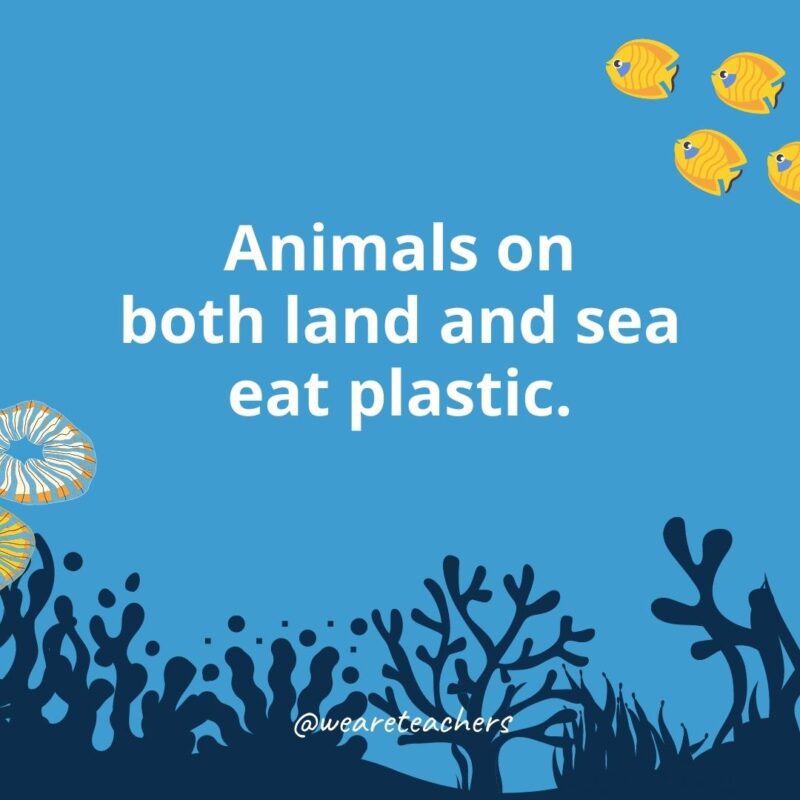
The devastating truth is that 52% of sea turtles have eaten plastic trash. One expedition found plastic in the stomachs of 20% of the fish.
20. Ocean pollution reduces oxygen in the water.
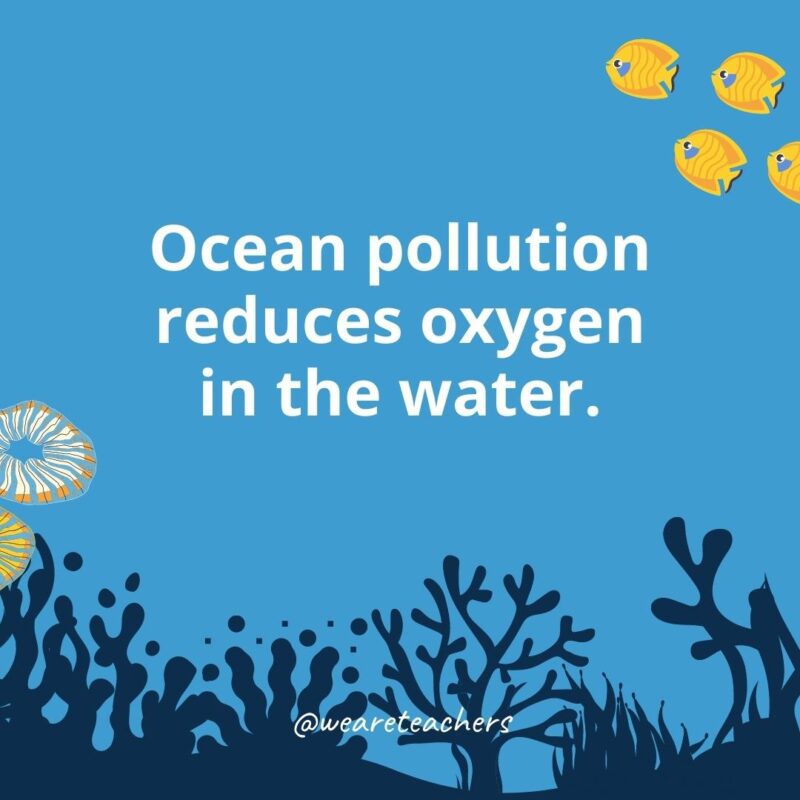
Plastic pollution disrupts the species of bacteria that reside in the ocean and is responsible for producing oxygen. This is one of the most important ocean facts for kids you can share. We need to all do our part to protect our oceans!
21. Oceanographers study the oceans and try to keep them healthy.
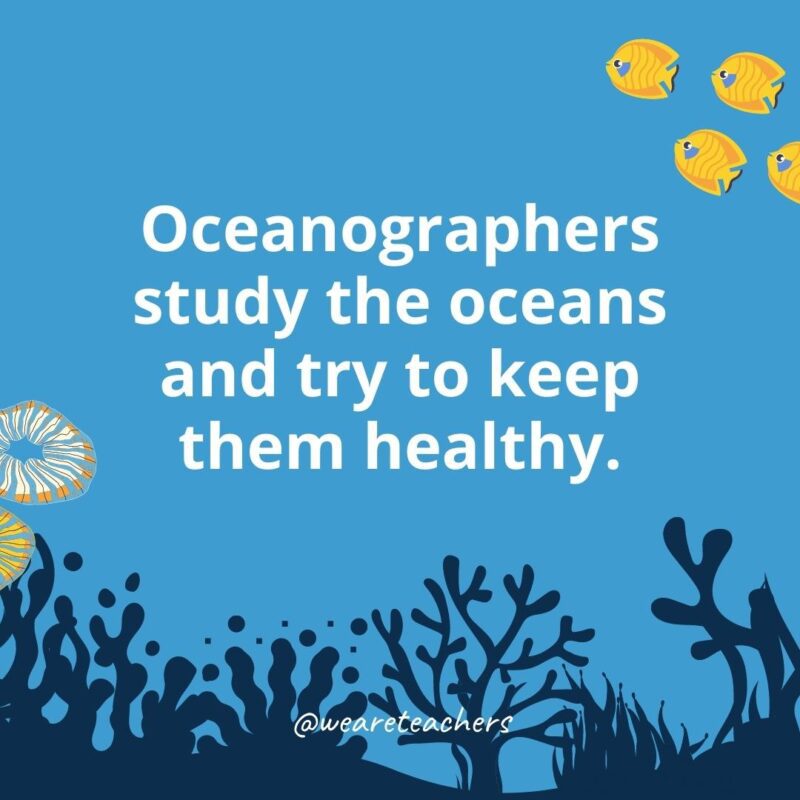
Oceanographers monitor the way the water moves, look at the structures of basins and seafloors, examine the quality of the water, and study the plants and animals that live in oceans.
22. We’ve only explored 5% of the oceans.
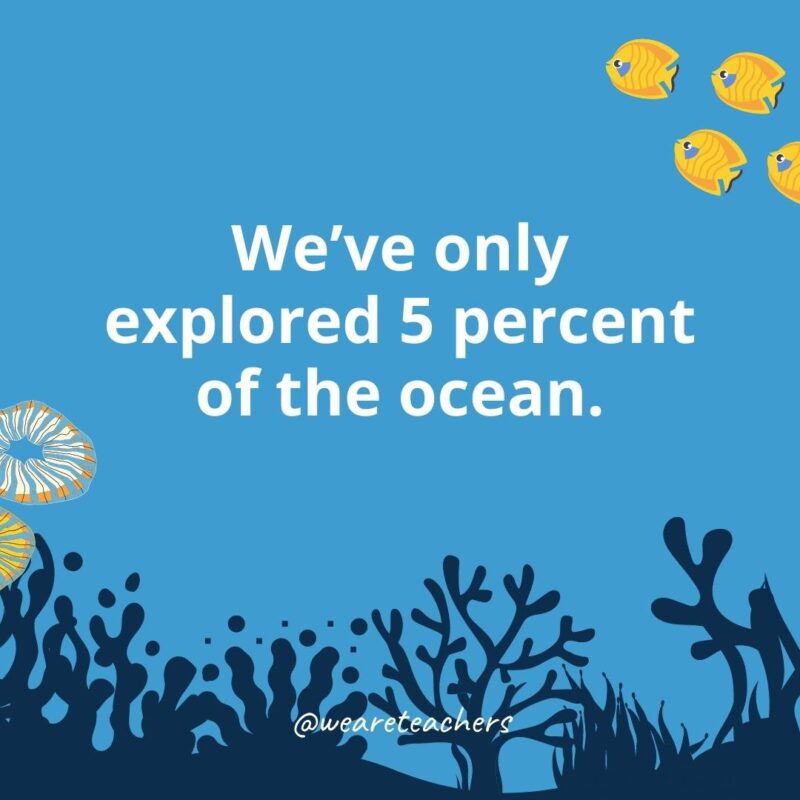
Considering oceans cover about 70% of the Earth, we have a long way to go in getting to know our oceans! Will you be the next oceanographer to discover an underwater trench or new species of fish? Watch this cool video about ocean explorers!
23. The Pacific Ocean is the largest ocean on Earth.
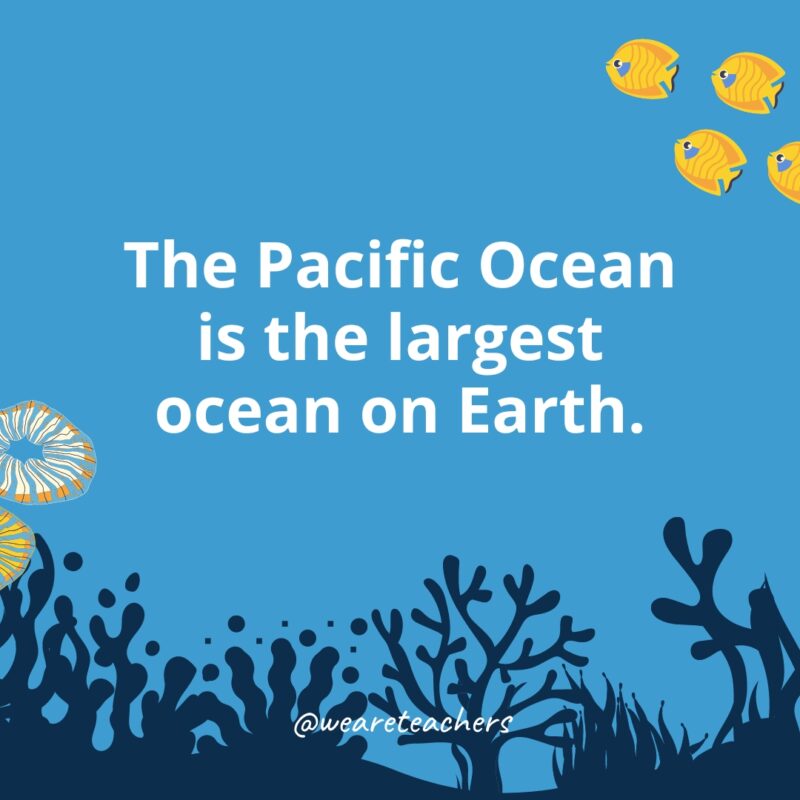
It covers more than 30% of the Earth’s surface!
24. The Arctic Ocean is the smallest ocean on Earth.
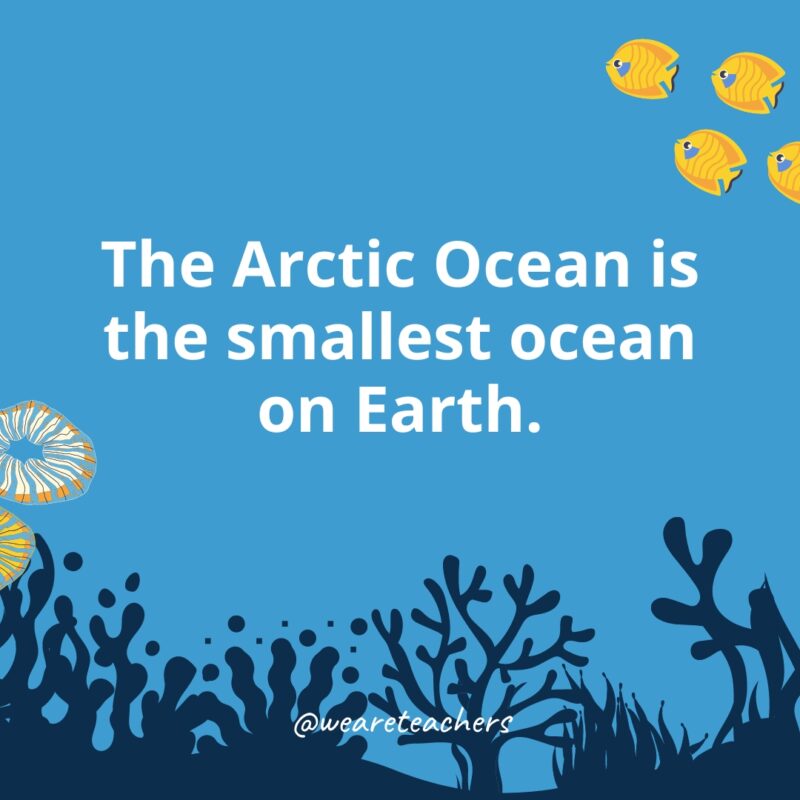
Located at the North Pole, the frigid Arctic Ocean is not only the smallest but also the shallowest ocean. This is one of the chilliest ocean facts for kids!
25. The longest mountain range can be found underwater.
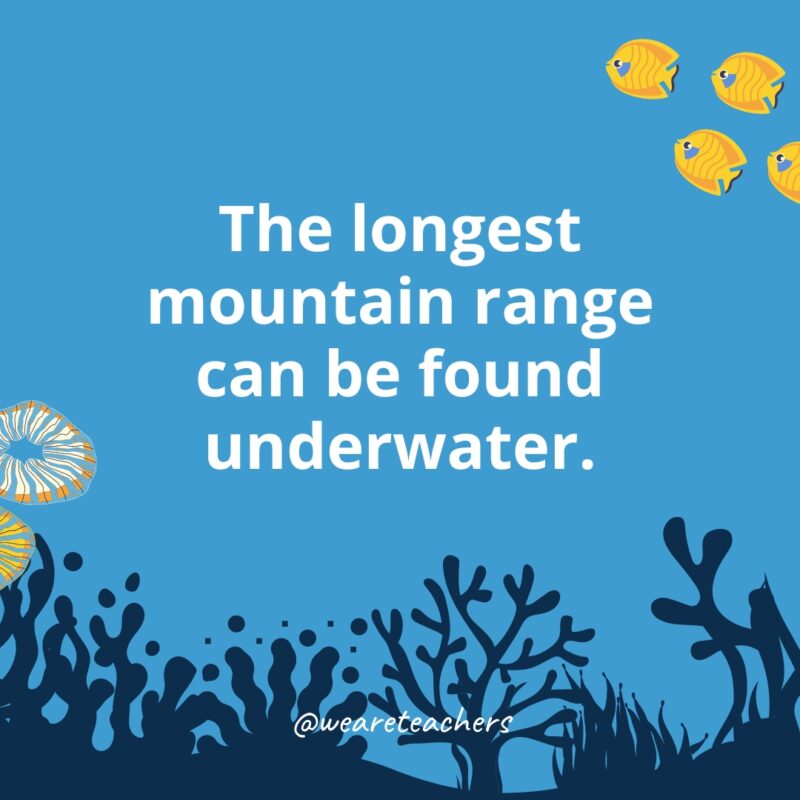
This one shares facts about the ocean and mountains! The Andes in South America span 8,900 kilometers (5,530 miles) and are known as the longest mountain range on land. A much, much larger mid-oceanic ridge was found underwater, with a length of almost 65,000 kilometers (40,389 miles). That’s massive!
26. The Ring of Fire is a region of frequent earthquakes and volcanic activity in the Pacific Basin.

The Ring of Fire includes many trenches, including the famous Mariana Trench, where the deepest place on Earth is located.
27. The Atlantic Ocean is slightly larger than half the size of the Pacific Ocean.

Even though it’s the second-largest ocean and reaches a depth of 27,493 feet, the Atlantic Ocean covers just about one-fifth of the Earth’s surface.
28. The Pacific Ocean’s name has a calming origin.
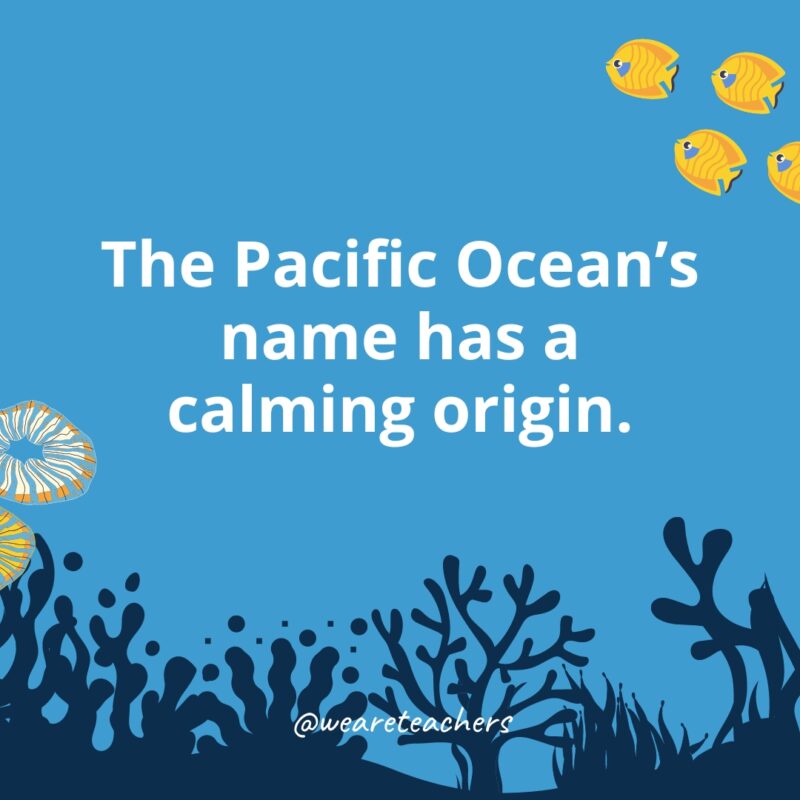
Named by explorer Ferdinand Magellan, the name is derived from Tepre pacificum, which is Latin for “peaceful sea.”
29. The Pacific Ocean borders more than 50 countries!
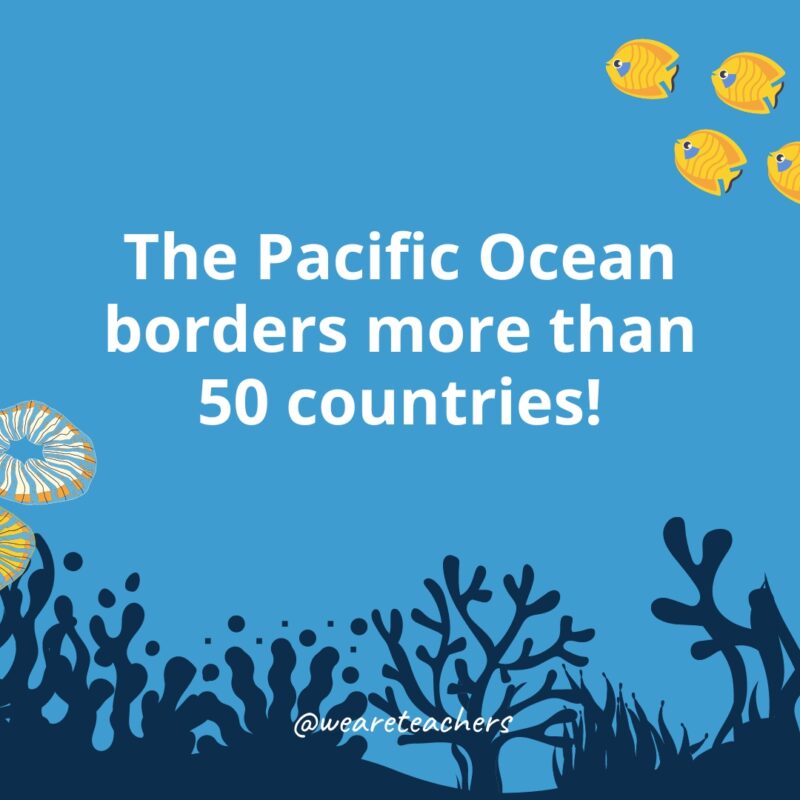
This is one of the most astonishing fun facts about the ocean. Since the Pacific Ocean is so large, it makes sense that it touches so many countries, including Australia, Chile, Japan, and the United States.
30. The Titanic sank in the Atlantic Ocean.
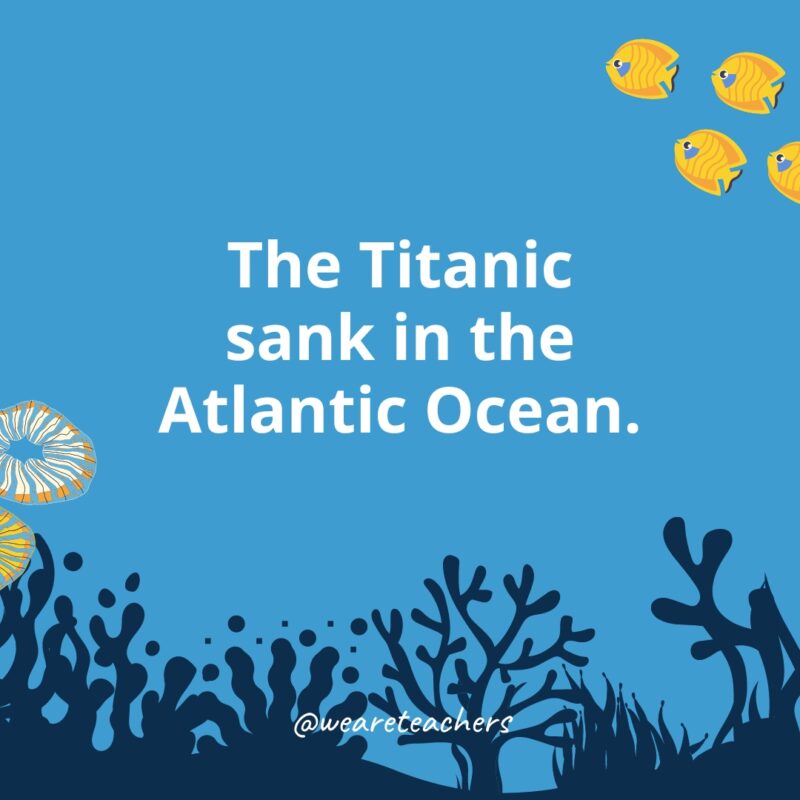
Just off the coast of Nova Scotia in Canada, the famed ship hit an iceberg and sank. More than 1,500 passengers lost their lives.
31. The warmest ocean is the Indian Ocean.
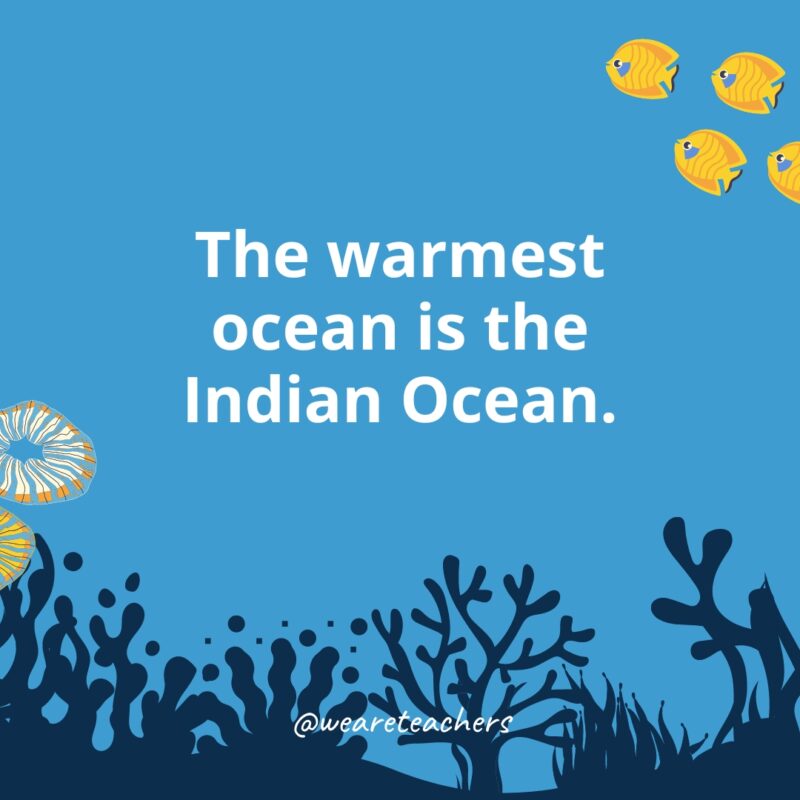
Due to the warmth of the Indian Ocean, the water evaporates faster than other oceans and the warm temperature makes it tough for phytoplankton to survive.
32. The youngest ocean is the Southern Ocean.
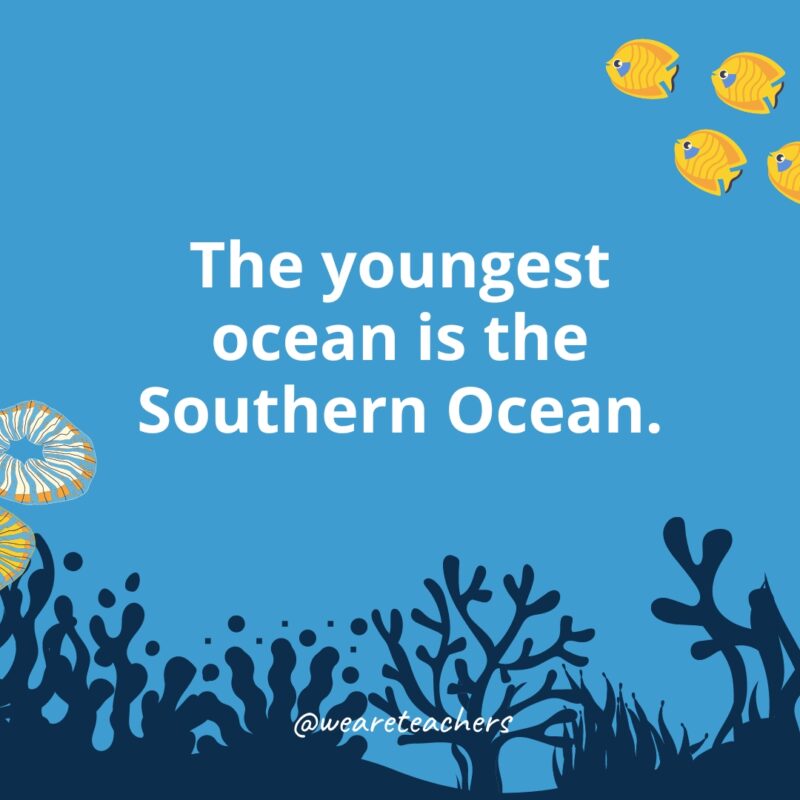
Formed when Antarctica split from South America and Australia, the Southern Ocean (also known as the South Polar Ocean or Antarctic Ocean) is roughly 30 million years old. This process also formed the famous Drake Passage (while you’re sharing these ocean facts for kids, watch this video of what it’s like to cross the Drake Passage)!
33. There are five named oceans on Earth: the Pacific, Atlantic, Indian, Arctic, and Southern Oceans.
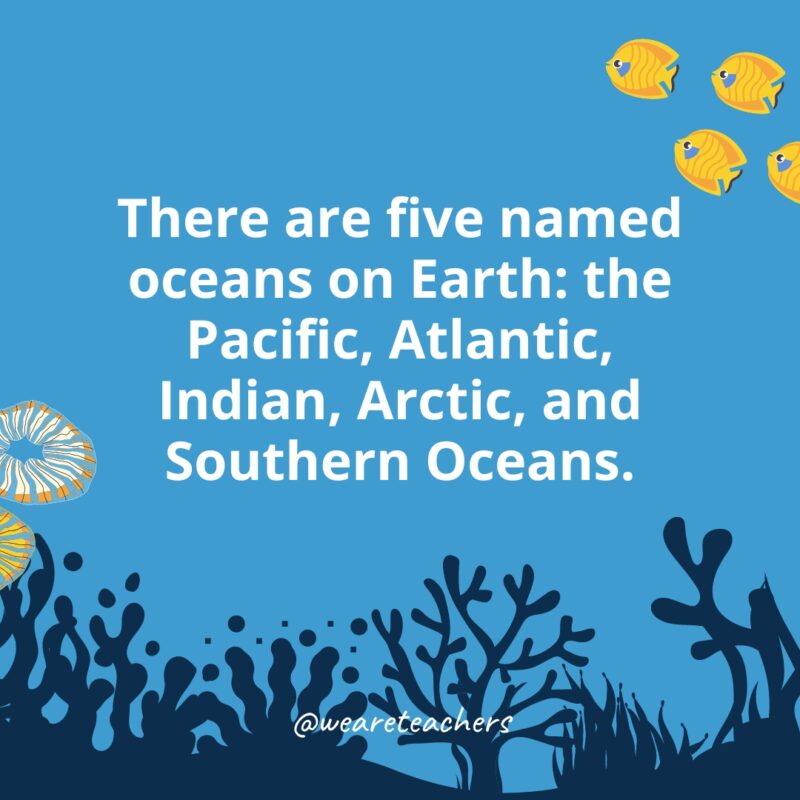
Although scientists recognize one world ocean, it is divided geographically into the five named oceans.
34. Sperm whales sleep upright in the ocean.
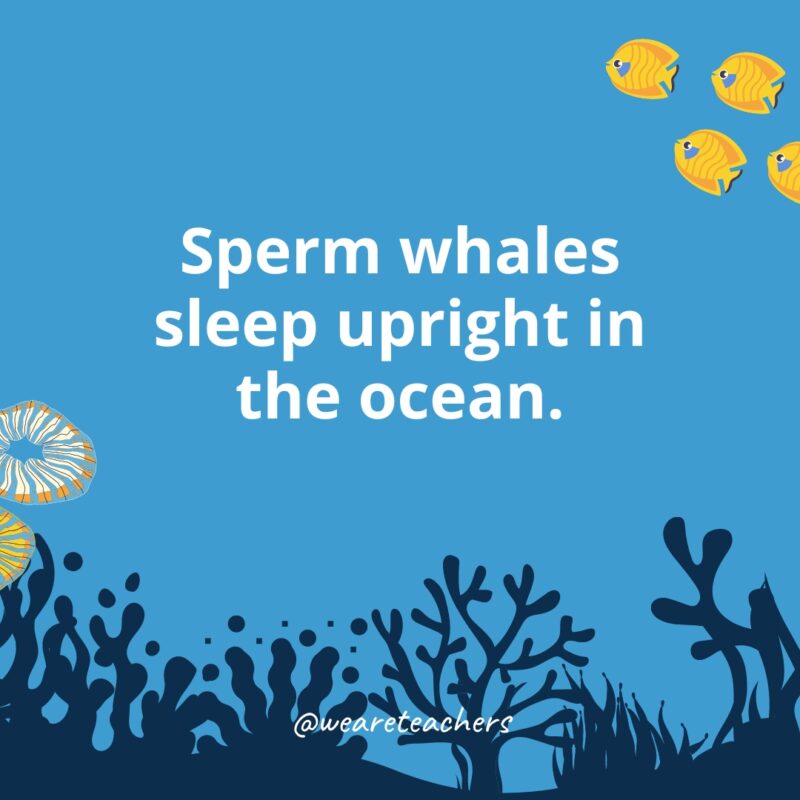
The magnificent sperm whale maintains a vertical position during its 10-to-15-minute-long power naps. Doesn’t sound very restful for humans!
35. The Atlantic Ocean was the first to be crossed by both air and sea.
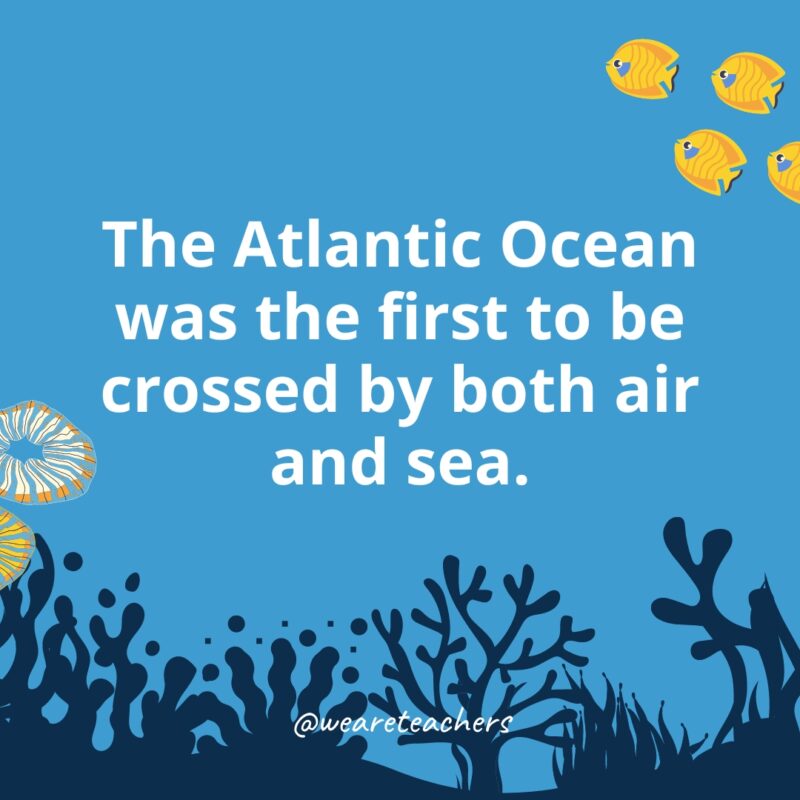
While the Vikings and explorers found their way across the Atlantic Ocean, ocean liners began crossing in the early 1800s. In 1919, Captain John Alcock and Lieutenant Arthur Whitten Brown were the first to complete a nonstop transatlantic flight!
36. Oceans absorb carbon dioxide from the atmosphere.
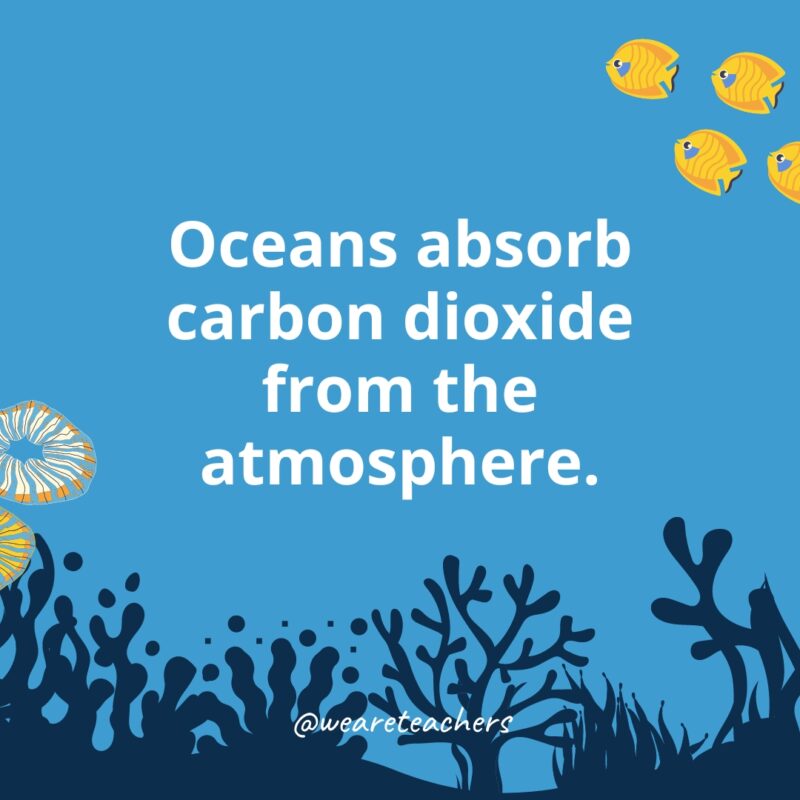
The oceans help regulate Earth’s climate by absorbing about 30% of the carbon dioxide (CO2) that humans release into the atmosphere.
37. The deep sea is home to bioluminescent creatures.
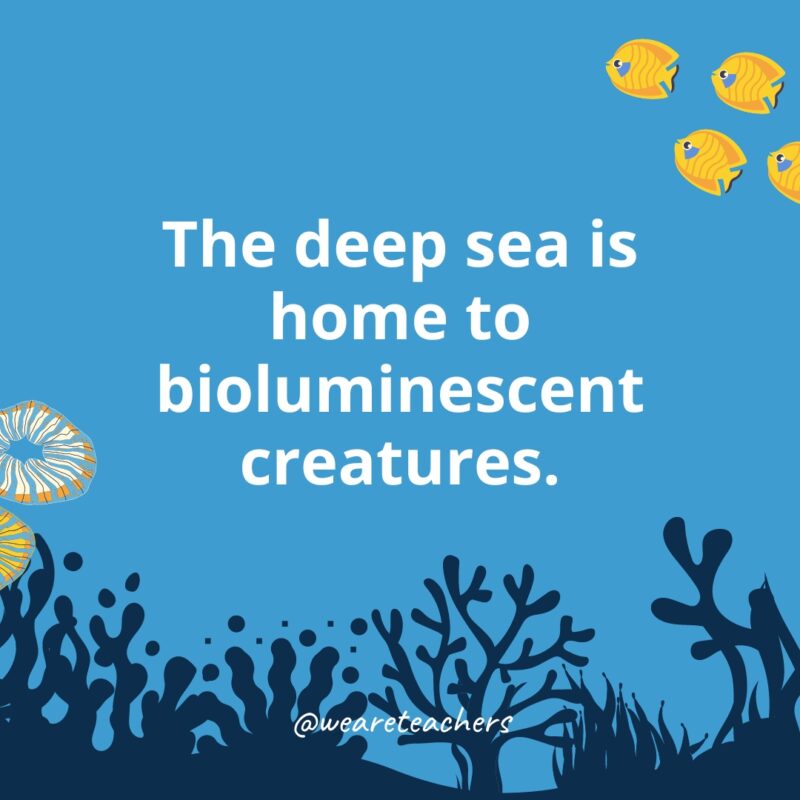
It’s estimated that a whopping 90% of the animals living more than 500 meters (1,640 feet) below the surface are bioluminescent (light-emitting). This has to be one of the most mind-blowing ocean facts for kids! Creatures commonly found in the pelagic zone include jellyfish, shrimp, squid, and fish.
38. The Indian Ocean covers about 20% of the Earth’s surface.
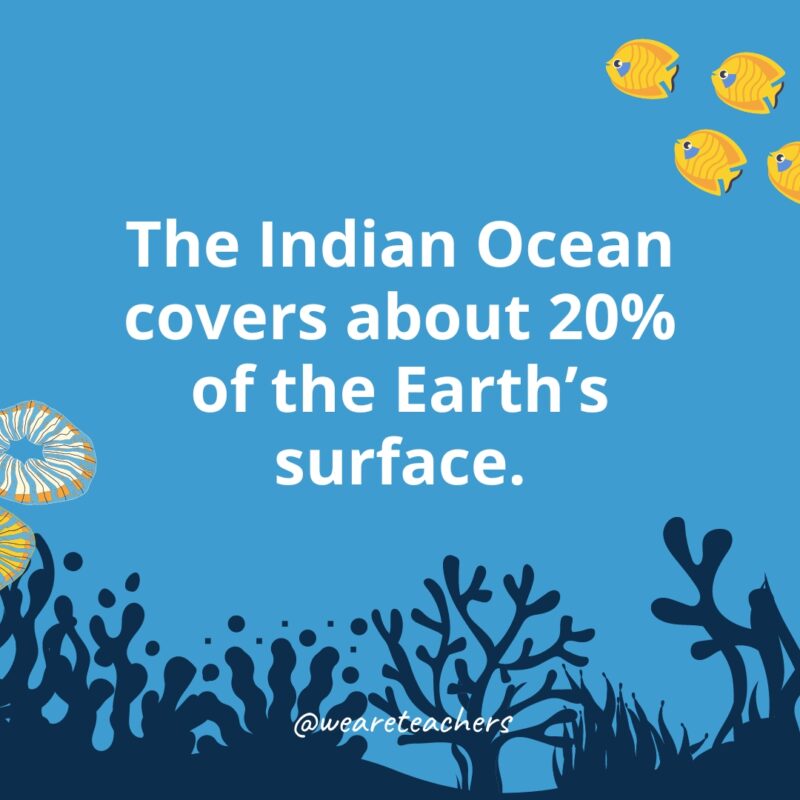
The third largest of the five oceans, the Indian Ocean is about 5.5 times the size of the United States!
39. The Great Barrier Reef in the Pacific Ocean can be seen from space.
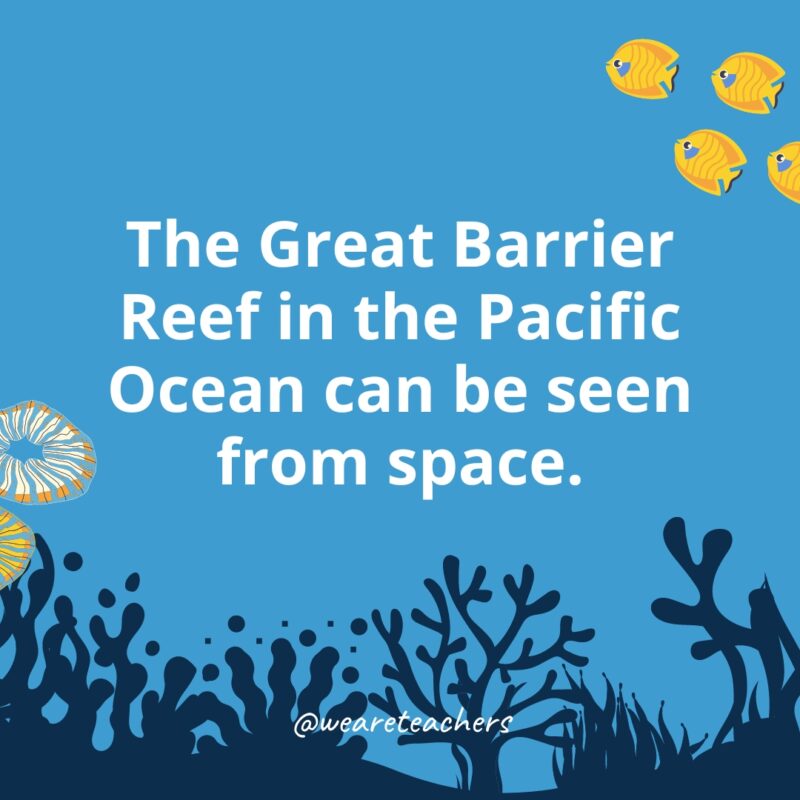
It is, after all, the largest living structure on the planet!
40. Hydrothermal vents in the ocean can reach temperatures of over 750° Fahrenheit (400°C).
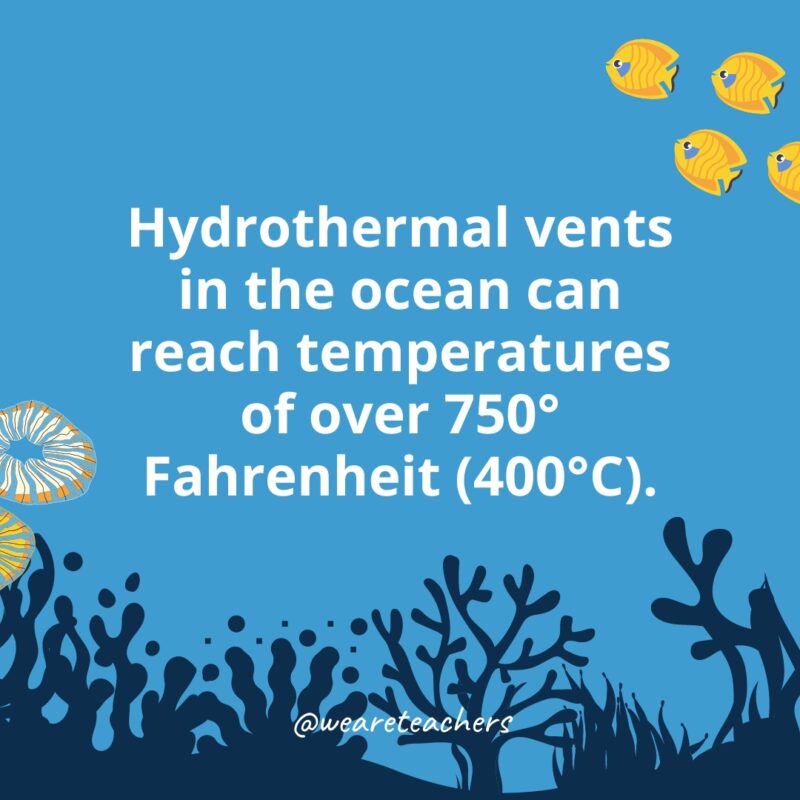
Hydrothermal vents are found along mid-ocean ridges and release mineral-rich water that supports unique ecosystems.
41. The ocean has underwater lakes and rivers.

They form when seawater “seeps up through thick layers of salt, which are present beneath the seafloor.” Wow!
42. Ocean pressure increases with depth.
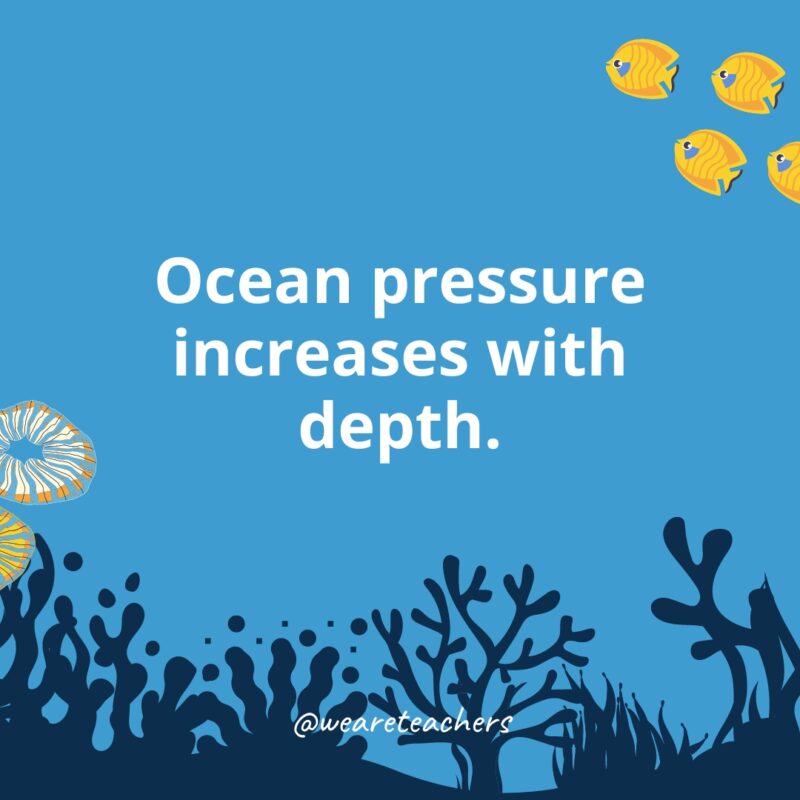
When you think about it, it makes sense—the deeper you go under the sea, the greater the pressure from water pushing down on your body!
43. Giant kelp forests in the ocean provide vital habitat.

These kelp forests provide shelter, nursery areas, and food for thousands of ocean species.
44. The loudest sound in the animal kingdom comes from a whale.

Considered the loudest animals on Earth, sperm whales can produce sounds as loud as 230 decibels—that’s louder than jet engines and rocket launches!
45. Sea levels have risen about 8 inches since 1880.
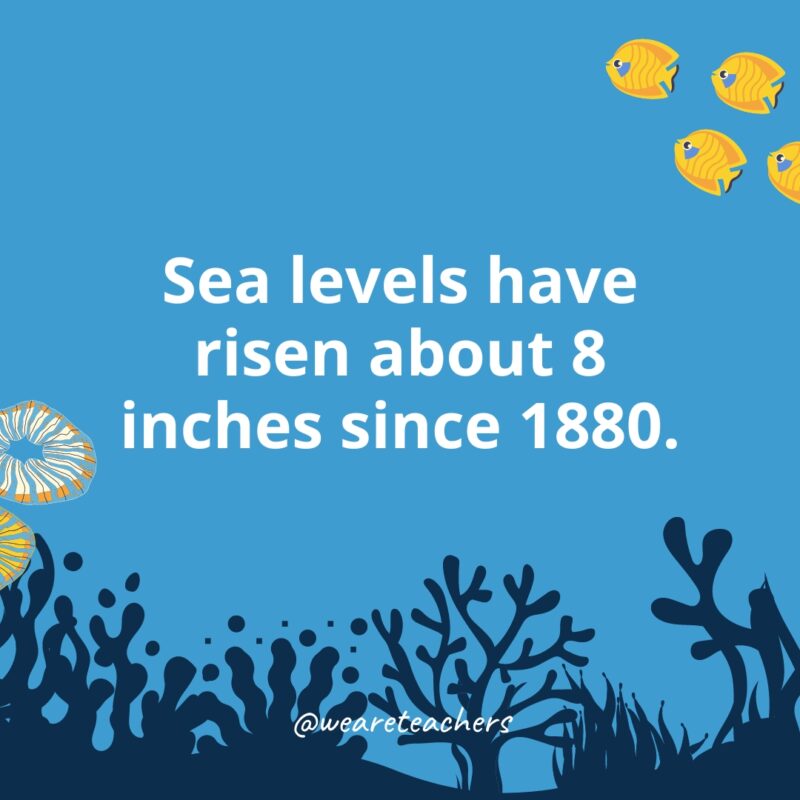
This rise is due to changes in climate that have caused the expansion of seawater as it warms and the melting of ice over land, such as glaciers and polar ice caps.

